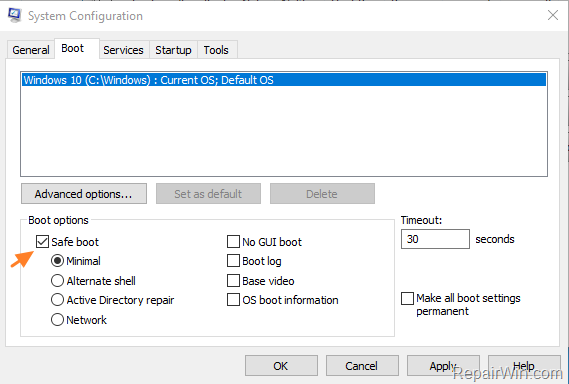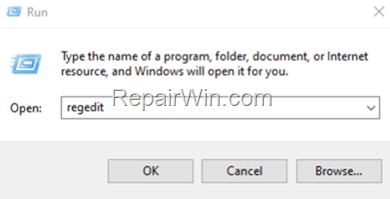In this guide, we will walk you through the steps of fixing the following problem in Device Manager “Unknown USB Device (Device Descriptor Request Failed) – Code 43, in Windows 10/11. The USB device descriptor failures usually occurs when attaching USB disks on USB 3.0 ports.
Problem in details: Windows 10/11 cannot recognize USB disks or other devices connected to a USB port (e.g. USB Printer, Android devices, Game controllers, etc.), and the following error occurs in device management:
Windows has stopped this device because it has reported problems. (Code 43)
A request for the USB device descriptor failed
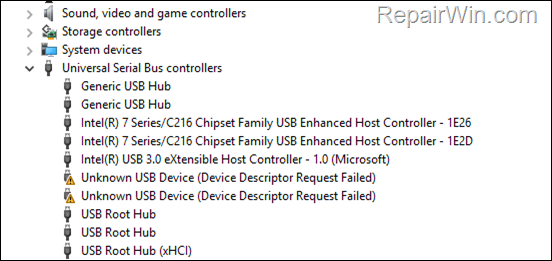

The USB Device Descriptor contains information about a USB connected device. Windows uses this information to identify the manufacturer and model of the USB device and load the appropriate drivers required for it to work properly. If Windows fails to read the “USB Device Descriptor” information, then it does not recognize the connected USB device(s), despite the fact that the device(s) may work normally on other computers,
How to fix Code 43: A request for the USB device descriptor failed in Windows 10/11.
Before you continue to the methods below, try the following:
- Ensure that the USB device is working on another computer.
Try to connect the USB device to another USB port. If this works, it means that the USB port you previously connected your device to is probably damaged or the correct driver is not installed. *
* Note: If it’s a USB 3.0 port, try to find a driver for it from the computer manufacturer’s support site.
- Shutdown your computer and remove the power cord for 7-10 minutes. If you own a laptop, remove the battery too (if you can). Then, turn on your PC again, and see if the problem persists.
- If the problem occurred after installing Windows updates, proceed and uninstall the latest installed update.
Method 1. Run Hardware & Devices Troubleshooter.
1. Press the Windows ![]()
![]() key + R key to open the RUN command box.
key + R key to open the RUN command box.
2. In the text field of the dialog box, type the following and hit Enter.
- msdt.exe -id DeviceDiagnostic
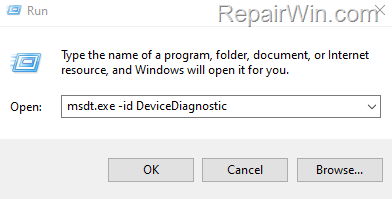

3. Click Next to Hardware and Devices troubleshooter.
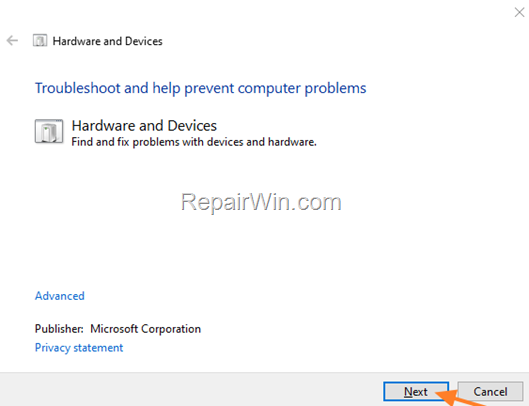

4. Let the troubleshooter to identify the problem and then click Apply this fix. *
* Note: If prompted, select Enable Automatically checking for the newest drivers on Windows update when a new driver is installed.
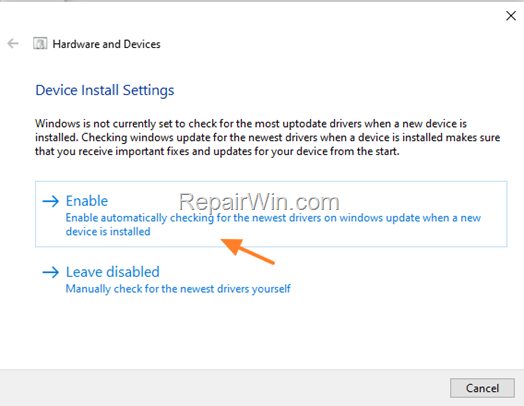

Method 2. Disable USB Suspend Settings.
1. Open Power Options from Control Panel.
2. Click at Change plan settings.
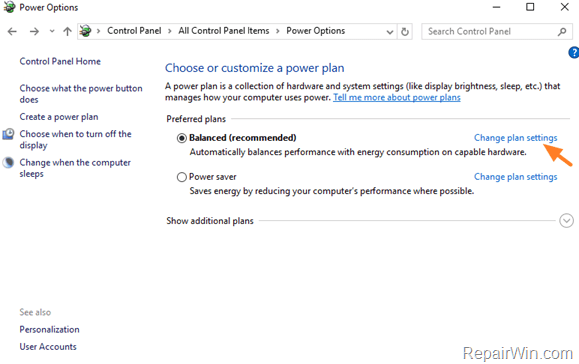

3. Then select Change Advanced Power Settings.
4. At USB Settings set the USB selective suspend setting to Disabled. *
* Note: If you own the laptop set the USB Suspend to Disable to both “On Battery” & “Plugged in”.
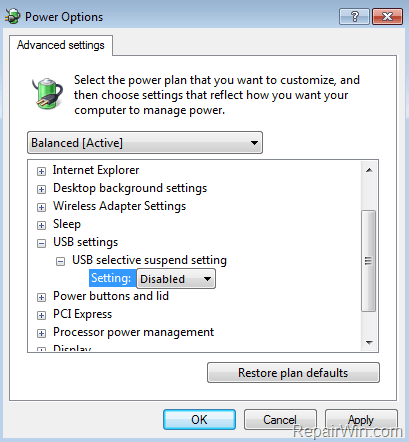

5. Click OK to apply changes.
6. Restart your computer.
Method 3. Disable the Fast Startup.
Fast Startup is a feature of Windows that allows our computers to restart more quickly. However this can cause problems with the USB connected devices, resulting in situations like this one. So, force Windows 10 to fully shutdown, by disabling the fast startup feature and see if the problem persists.
1. Navigate to Start -> Settings -> System.
2. At Power options click Additional power settings.
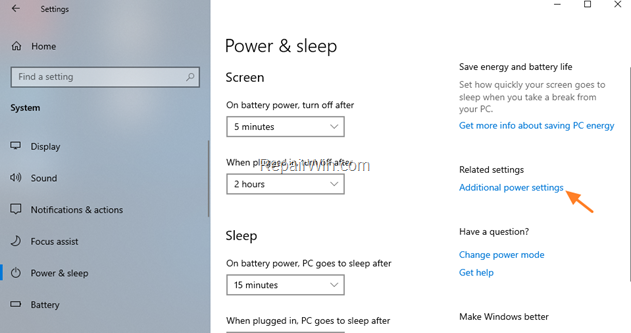

3. Select Choose what the power buttons does at the left.


4. Then click Change settings that are currently unavailable.
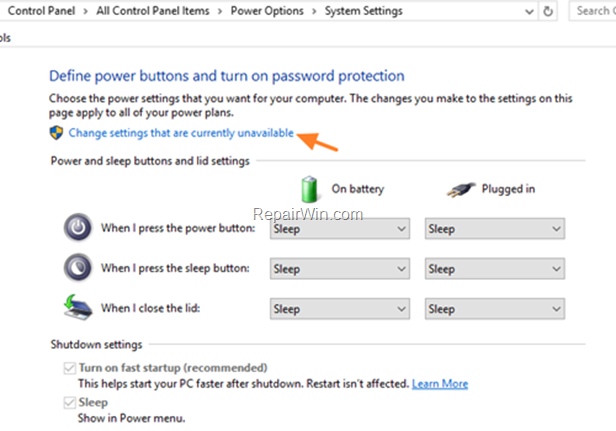

6. Uncheck the Turn on fast startup (recommended) option and click Save changes. *
* Note: If the fast start up option was already unchecked, then check it and restart your computer. After restart uncheck it and restart your computer again.
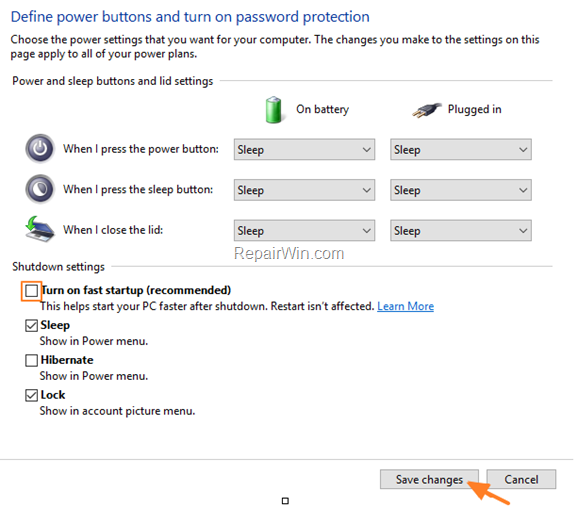

7. Shutdown your PC and then turn it on and see if the USB device is recognized.
Method 4. Prevent Windows to Turn Off USB Root Hub(s) to Save Power.
1. Press the Windows ![]()
![]() + R keys simultaneously on your keyboard to open a Run dialog box.
+ R keys simultaneously on your keyboard to open a Run dialog box.
2. Type devmgmt.msc and hit Enter.
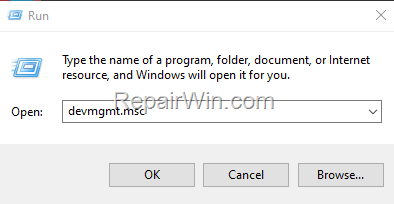

3. Double click to expand the Universal Serial Bus controllers.
4. Right-click on USB Root Hub and select Properties.
4a. In Power Management tab, uncheck the option Allow the computer to turn off this device to save power and click OK. *
* Note: If you have more than one USB Root Hubs, uncheck this option for all USB Root Hubs
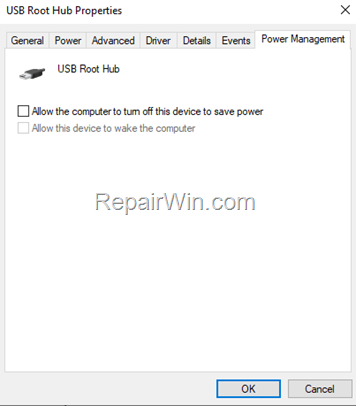

5. Unplug the USB device(s) and then restart your PC.
6. After restart reconnect USB devices, and see if the problem fixed.
Method 5. Uninstall All USB Devices in Device Manager.
Attention: By applying this method you will lose temporarily the connection to any USB connected device. (Keyboard, Mouse, Printer, etc..
1. Restart Windows in Safe Mode. To do that:
1. Press the Windows
+ R keys to open the run command box.
2. Type msconfig and press Enter.
3. At Boot tab select the Safe Boot option, then click OK and restart your computer.
2. In Safe Mode, press the Windows + R keys simultaneously on your keyboard to open a Run dialog box.
3. Type devmgmt.msc and hit Enter.
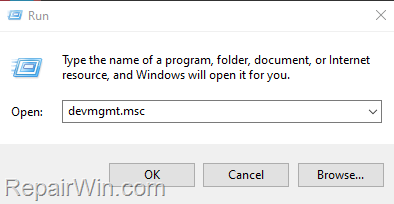

4. Once you are inside the Device Manager window, from the View menu select Show Hidden Devices.
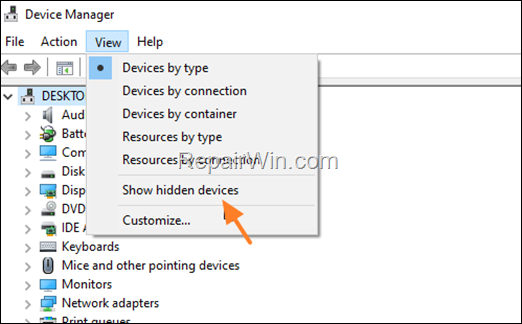

5. Now double click to expand the Universal Serial Bus controllers.
6. Proceed now and uninstall ALL USB devices one by one by first removing the USB Mass Storage Device(s) then the USB Root Hubs & finally the USB 3.0 devices / controllers. To do that, Right-click on a USB device and choose Uninstall device. *
* Note: If you use a USB Keyboard or Mouse and you lost the connection, unplug and re-plug them to regain connectivity. If your K/B or Mouse does not work after waiting for 3-4 minutes, then press continually the Power button for 5-6 secs to fully shutdown your PC and Power On it again.
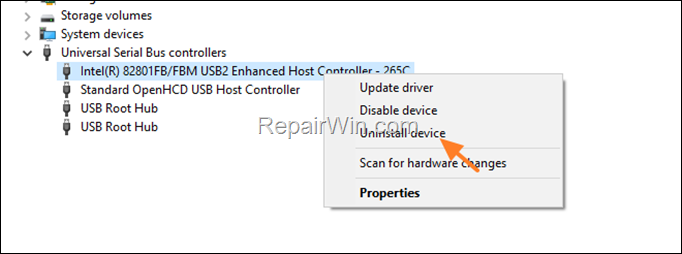

7. When done, run the ‘msconfig’ tool again and at the General tab, check the Normal startup and click OK.
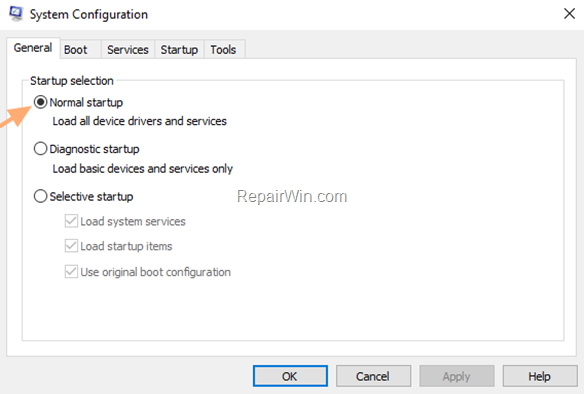

8. Restart your computer and let Windows to reinstall the USB Controllers and then reconnect the USB devices.
Method 6: Delete invalid or corrupted Registry entries.
1. Open Registry Editor: To do that:
- Press the Windows
+ R keys to open the run command box.
- Type regedit and press Enter.
2. From the left pane, navigate to this key:
- HKEY_LOCAL_MACHINESYSTEMCurrentControlSetControlClass{36FC9E60-C465-11CF-8056-444553540000}
3. Look at the right-pane and Delete (right-click > Delete) the following registry entries (values) if found:
- UpperFilters
- LowerFilters
4. Close Registry Editor and restart your computer.
5. Check if your USB Device is working. If not, proceed to next method.
Method 7. Change the value of “AdditionalCriticalWorkerThreads” Registry key.
1. Open Registry Editor and navigate to this path:
- HKEY_LOCAL_MACHINESYSTEMCurrentControlSetControlSession ManagerExecutive
2. At the right pane double-click at AdditionalCriticalWorkerThreads.
2a. Change the Value data to 2 and click OK.
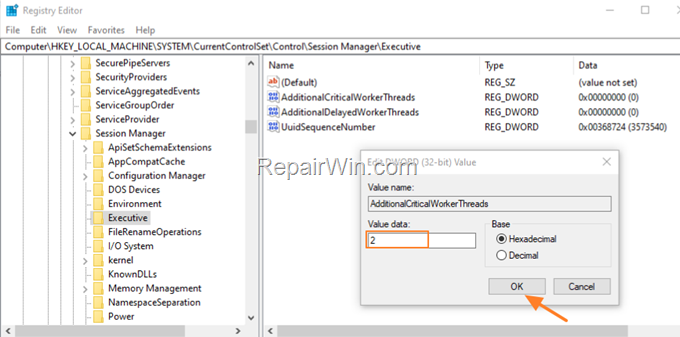

3. Close Registry Editor and restart your PC.
Method 8. Update Chipset Drivers.
1. Click the link below to download the Intel® Driver Update Utility.
- http://www.intel.com/p/en_US/support/detect
2. Run the utility and install the latest Intel drivers for your computer.
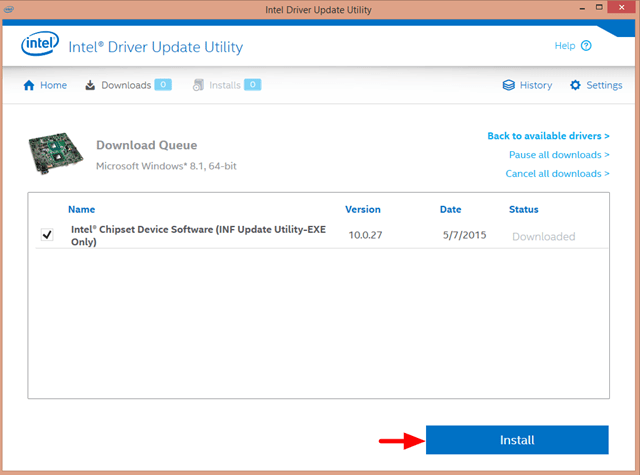

3. When the driver installation is completed, restart your computer.
OTHER METHODS TO FIX THE USB DEVICE CANNOT START – ERROR 10 – ISSUE:
1. Change the device’s USB cable.
2. Try to restore your computer to a previous working state.
- How to Restore Windows 10, 8 or 8.1 to a previous working state
- How to Restore Windows 7 or Vista to a previous working state.
3. Backup your files and clean install Windows 10.
That’s all folks! Did it work for you?
Please leave a comment in the comment section below or even better: like and share this blog post in the social networks to help spread the word about this solution.




